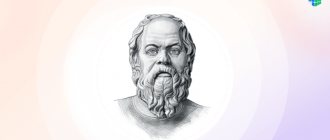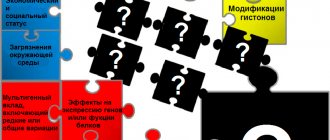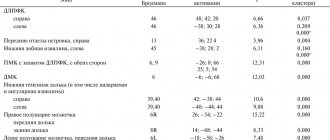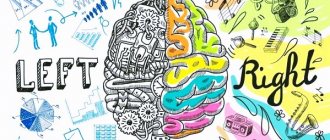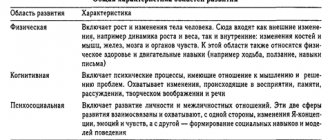Psychologists have a joke that clearly shows How do representatives of the five psychotypes behave according to psychogeometry?: five buses have arrived, into which representatives of all 5 figures must board. Circles - they climbed onto the bus cheerfully, joking around, making fun of each other, and sat down in groups of three on the seats, as a result, more of them fit in than necessary. Triangles - each tried to push the other aside, and they sat down one at a time, trying to take the best seats at the beginning of the bus and clearly one for two seats, as a result, they fit in half as many as there were seats on the bus. Squares – they entered in a disciplined manner, sat down neatly, strictly followed the instructions, and caused the least amount of trouble. Rectangles – they had to be herded onto the bus, some were afraid to get on, some got lost at the station, some didn’t know how to get on and asked for it to be explained to them, it took the longest time to seat them. Zigzags - they climbed into the bus in all possible ways, some through the window, some through the hatch in the roof, they also sat down, some at their best, began to give advice to the driver on how best to drive the bus, an exchange of ideas began on what could be improved in this bus.
This joke clearly and quickly shows all five psychotypes that were created by Susan Dellinger, an American psychologist. She called her theory psychogeometry, since all her psychotypes are associated with one of the basic geometric figures.
A little test
How can you determine which type of psychogeometry a person belongs to? Give him a piece of paper and a pen and ask him to draw three geometric shapes out of the five basic ones (square, triangle, circle, zigzag, rectangle). The first drawn figure will be the person’s main psychotype, the other two are additional. According to psychologists, people rarely have a clearly defined psychotype; most often, they are mixed types, with a predominance of one main type. For example, the leader is a triangle, and inside is a conservative square. Or a soft circle, and the second figure of this person is a creative zigzag.
A similar test can be carried out with relatives or friends, and work colleagues can be tested. It is also suitable for job interviews. But what if you need to quickly determine the psychotype of your interlocutor, for example, a client or buyer, in order to know how to communicate, interact with him, or offer certain services or goods? In this case, asking to draw figures on paper will not work. Then you need to know the main features of the five psychotypes, each of which has its own geometric figure.
Victim behavior in relationships
The victim does not necessarily suffer for real. The main thing for her is to feel unhappy. This position is comfortable for her
Receiving confirmation of his status, the victim enjoys the attention, pity, and sympathy of others. With her behavior she provokes the aggressor, causing anger, threats, neglect
The behavior of the aggressor makes her feel shame, resentment, jealousy, envy.
A cocktail of sensations makes you feel alive. Without nourishment from the aggressor, she feels exhausted, unnecessary, and afraid of life. The victim can be a woman, a man, a child. Signs of victim behavior:
- passivity, immaturity, desire to shift responsibility to a partner;
- deliberate provocations, complaints, constant emphasizing one’s unenviable position;
- negative reaction to attempts to help, enjoyment of sympathy.
The victim is filled with self-pity and sincerely considers himself unhappy. But as soon as the opportunity to leave the relationship arises, she ignores it. Help in the form of sympathy is readily accepted, but more decisive actions of the savior are perceived as an encroachment on their relationship and actively resist
Triangle
These are leaders in all spheres of life, business, politics . As a rule, for many managers the main figure in psychogeometry is a triangle. How to identify them? They are expensively and tastefully dressed, they love pretentious and status things, prestigious cars. They have the latest computer equipment and mobile phones. They like elite alcohol and cigars. The workplace is expensively furnished, with status accessories. They value quality in everything. Their speech is authoritative, with elements of orders, fast and clear. They don't like being contradicted. They believe that they are better than others in many respects and understand many things better than others. They make decisions quickly and are able to take responsibility for these decisions. It is important for them to be very informed. They catch information on the fly and know how to understand it. They often do several things at once. Their weakness is excessive despotism and vanity.
The role of the rescuer
Understanding the role of the rescuer character, the motives for his actions and their results is the key to realizing and tracking this role in one’s own existence. This is a chance to make a meaningful choice: to continue to manipulate individuals or to learn to treat the environment and oneself in a healthy way.
Playing rescuer should not be equated with true help in emergency situations, for example, saving people in a fire. In the efforts of a rescuer there are always secret motives, understatement and dishonesty. In reality, codependent relationships like the triangle of fate slow down development, bring suffering to people and confusion into existence.
The rescuer loses the chosen role because of the need to save, so as not to think about his own hidden feelings, anxiety, because the object of attack needs participation.
We can identify 7 characteristics inherent in people who prefer to occupy the described position in relationships.
First of all, such subjects have problems in personal relationships, which is expressed by the absence of a family, or in the family each spouse lives a separate life.
Rescuers are often very successful in social life. Their superiors value them for their conscientious work, they do not violate legal norms, and if they do, it is unproven.
The main task of this category of persons is to provide the victim with a chance to “sip a little air” so that the object of persecution does not “suffocate”, and then tighten the “noose” more tightly. This process can last indefinitely until one of the players decides to change their role. The main goal of the rescuer is to exclude the possibility of the victim becoming a victim on his own.
People who adhere to this role always slightly despise the object of attack, as a result of which their help is condescending in nature.
The rescuer often harbors rather “large-scale” rescue plans. This category of people is characterized by ambition. They strive to control as many individuals as possible. The more insecure and helpless people are, the better the rescuer, since his power becomes more comprehensive.
Individuals in this role try to hide their own aggression, and therefore completely deny its presence. A person is a living being who is often overwhelmed by various emotions, as a result of which he is characterized by aggressive messages. The rescuer seems to be demonstrating his love for all living creatures.
When the victim finally decides to refuse intrusive help, the rescuer resorts to manipulation, threatening that the object of persecution will remain alone in this huge world full of horrors and hardships. After which he steps aside and takes an observant position, waiting for the victim to stumble, lower his already low self-esteem, and repent. He is waiting for such a moment to appear triumphantly. However, such an appearance may be late, since the victim could have acquired a new “yoke” in the form of a subject trying with all his might to impose his own help.
Square
Conservative and neat pedants . They can often be found among accountants, officials, administrators, and company executives. They are always neatly and cleanly dressed, shaved, combed, shoes polished. Clothing is not always fashionable and stylish, but practical and comfortable. The workplace is clean, tidy, everything is in its place. When choosing a car, they are guided by maximum practicality and efficiency. Obedient, respectful of government officials, strictly following rules, standards, orders, and instructions. Able to work with various documents and figures. Attentive to the smallest details. Efficient and reliable. If they are entrusted with any task, they will complete it on time, even if they have to sacrifice their personal time for this. Speech is calm, without emotional outbursts, but can be a little boring. Their weak point is psychological relationships and various intrigues.
Decoding the results
Where is the circle located?
Closer to the left edge of the sheet
You are a conservative and reserved person. We are accustomed to acting in accordance with the rules that we once accepted as truth for ourselves. It is difficult to convince you of anything. If your partner needs to insist on his own, then he will have to use very significant arguments to get you to agree.
Closer to the right edge of the sheet
You have an active desire to try everything new, you always want to move forward. You like to take the initiative, are adventurous and to some extent reckless.
In the center
You are perfectly adapted to modern realities. You harmoniously combine conservatism and radicalism. You are a creative person. In your affairs, you are guided by common sense and your emotions, which you perfectly feel, understand and regulate.
Circle
Sociable, cheerful, sociable. If you have the “soul of the party” at work, then this is definitely a circle in psychogeometry. Communication for them is the highest life value. They love to do social work, collect money for birthdays and other events, organize various events, corporate events, and parties. They can “cry into your vest”, they will always understand and listen, and also give advice. Circles are innate psychologists who are well versed in the intricacies of human relationships. Optimistic and emotionally stable. They are the most active visitors to social networks. The workplace is often a mess, in which they spend a long time looking for something, because the material world is not so important to them. On the table are photographs of family or friends, and many souvenirs. They prefer soft and comfortable clothes, for example, warm knitted sweaters, soft blouses, etc. It is the circles who most often have pets with whom they willingly tinker. The cars are small, brightly colored, decorated inside with various animals and pillows. Speech is emotional, with many shades and nuances; they love humor, jokes, jokes. Their weakness is that they can quickly fall under the influence of others and are sometimes dependent on the opinions of others.
Zigzag
This is the most creative psychotype . Original and creative, literally gushing with new and interesting ideas. These are inventors and creative individuals, for whom the most important life value is creative self-realization. They are unconventional in everything from their way of dressing to their workplace. On the desktop - they still have that mess, but at the same time, they manage to understand it perfectly, always quickly looking for the necessary paper or part. Speech is fast, fiery, they are in a hurry to say a lot, while caring little about whether they were understood at all. Sometimes, if you interrupt them, they will even wonder why their fiery speech was stopped. Clothes are either weird or untidy, because they don’t want to waste precious time of their lives on such nonsense as clothes. Or the second option is emphatically theatrical, pretentious, non-standard. There are many zigzags in the world of fashion, show business, and cinema. They are the trendsetters of the new fashion. They like to attract attention to themselves with something unusual. Their vulnerability is that they are too changeable and fickle.
Rectangle
The most unstable figure in psychogeometry. Almost all children do this, as well as other figures when they are stressed. Although some people are so infantile and dependent on other people’s opinions that they remain rectangles for many years. This is a figure of growth, a certain stage in a person’s life. Rectangles still don’t know or understand a lot , they ask questions more often than others, they are curious and interested in many things. They willingly listen to various explanations, go on excursions, read the opinions and comments of other people. They often have not yet formed their own opinion, so they willingly adopt the opinions of other people. In clothes - they change styles of clothing, constantly copying someone. The workplace can change, in the morning there is order, in the evening there is a mess on the table. They buy cars strictly following the principle of “what others drive.” They often overestimate or underestimate their own strengths. When other figures in psychogeometry fall into a stressful state, they become unstable rectangles: uncertain, oscillating. For example, strong and powerful triangles begin to drink, squares become chaotic and sloppy, circles close in on themselves and are silent, and zigzags sit on a chair and look at the ceiling or out the window and do not want to do anything.
source
